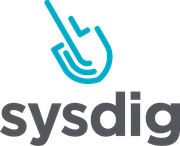Looking to buy network monitoring software? Our comprehensive buyers guide will help you find the perfect tool for your needs. Compare features and prices of top solutions in one place.
Welcome to the world of network monitoring software! The constant growth and evolution of technology means that keeping track of your network can quickly become an overwhelming task. System outages, network downtime, and slow performance can all have disastrous consequences for your business, from lost revenue to damaged reputation. That's where network monitoring software comes in. With the right solution, you can identify issues before they escalate, troubleshoot problems faster, and optimize your network performance. In this buyer's guide, we'll explore all the key features and benefits of this tool helping you to make an informed decision and find the perfect solution for your business.
What is network monitoring software?
This is technology used by companies to track the performance and health of their IT networks. This type of software provides visibility into the various hardware and software components that make up a network, allowing engineers to troubleshoot and prevent network outages and failures. The Open Systems Interconnection (OSI) Model is a framework that breaks down the functions of computer systems and their components for sending and receiving data. Network monitoring ensures that each layer of the OSI model is functioning properly. Metrics such as uptime, CPU utilization, bandwidth usage, throughput, and interface errors are collected to measure network health.
Its common use cases include:
- Proactive network monitoring for quick issue detection and resolution
- Analyzing network performance and usage trends to make informed decisions about future upgrades and investments
- Monitoring end-to-end user experience and application performance
- Real-time alerts for immediate diagnosis and mitigation of network issues
- Automating network configuration and security compliance checks
The types of companies that typically use this program span various industries and sizes:
- Large enterprises with complex and distributed IT networks
- Small and medium-sized businesses looking to optimize resources and reduce downtime
- Service providers and cloud-based companies to ensure availability and performance of hosted services
- Government agencies and educational institutions to manage large-scale networks
Investing in network monitoring technology can save an organization time, money and other resources by providing predictive insights into potential network issues and allowing for proactive maintenance. 80% of network monitoring solution customers report substantial cost savings. It is not only useful for reactive network troubleshooting, but also for making informed decisions about network investments and upgrades. In a world where a single network outage can cause significant financial and reputational damage, this application is a necessary investment for organizations of all sizes and industries.
What are the benefits of using a network monitoring system?
Companies rely heavily on their networks to communicate, collaborate, and operate day-to-day activities, network downtime can be catastrophic. Therefore, having a network monitoring tool is imperative for businesses of all sizes. Here are some of its benefits:
- Proactive network management: Monitoring software enables administrators to proactively manage their networks by identifying and diagnosing potential problems before they cause significant disruptions. It empowers IT teams to troubleshoot and resolve network issues quickly, improving network uptime.
- Real-time monitoring: With real-time monitoring, system administrators can detect and resolve network issues instantly, minimizing downtime and reducing the impact of any technical disruptions on business operations.
- Enhanced security: A monitoring tool can also enhance the security of a business network. It can detect and mitigate security threats such as malware, virus attacks, and unauthorized access attempts, among others.
- Better network performance: This system provides insights into network traffic and performance metrics. This information can help deploy changes to optimize network performance, identify areas of improvement, and ensure that the network runs efficiently, thereby reducing lag time and minimizing latency.
- Network capacity planning: A range of network monitoring solutions provide insights into network usage patterns. This information is valuable in capacity planning and assists in identifying trends and forecasting for future capacity requirements, allowing businesses to scale their network architecture as required.
- Compliance: Network monitoring software can assist businesses in meeting regulatory compliance requirements. For instance, companies in the healthcare, financial, or retail sectors are required by law to comply with regulations that protect sensitive customer data. It provides visibility into network activity, making it easier for companies in these sectors to comply with relevant regulations.
Incorporating this monitoring solution into a business network is essential to effective network management and better business outcomes. It provides valuable insights into network performance, enhances security, helps in capacity planning, and ensures regulatory compliance.
10 key features of network monitoring software
This type of tool helps businesses keep track of their network performance by monitoring different aspects of their network infrastructure, such as servers, routers, switches, and other network devices. In this section, we’ll explore 10 common features that are found in most of these solutions.
1. Real-time monitoring:
One of the most important features is this system's ability to monitor network performance in real-time. This feature allows businesses to identify and troubleshoot network issues promptly, reducing the downtime of their network.
2. Automatic discovery:
This advanced feature automatically detects all devices connected to your network and creates an inventory of all assets for management, which can be critical to keeping an overview of the devices in your network.
3. Alert management:
It will help you maintain your everyday workload by notifying you of important changes in your network status, reducing the need for continuous manual checks.
4. Performance metrics:
It provides detailed insights into performance metrics such as packet loss, latency, server response time, and a broad range of other metrics, making it easier to identify network trends over time.
5. Customizable dashboards:
Dashboards can be customized to display only the most important data for an organization, making it easier to identify and troubleshoot potential problems in the network.
6. Historical analytics:
It also enables historical analytics, which helps businesses make informed decisions about their network by revealing trends over time, enabling you to predict network behavior and plan accordingly.
7. Traffic analysis:
It conducts traffic analysis to identify the origin of network congestion and isolate the source of network problems. This feature also allows you to analyze traffic behavior for different user profiles.
8. Network mapping:
It provides a visual network map showing all devices and their interconnection types and helps businesses visualize their network infrastructure accurately.
9. Network reporting:
This technology provides comprehensive reports on network performance, allowing users to make informed decisions and prioritize network management issues accurately.
10. Network security:
A network monitoring platform provides security for your network, thus offering protection against DDoS attacks, network breaches, and other cyber attacks. It can automatically detect threats and alert IT personnel to launch an immediate response against the threats.
The 10 features outlined in this section are standard features for network monitoring software, and companies should take them into account when selecting the best-fit tool for their specific needs.
Considerations when investing in a network monitoring solution
With a wide range of software options in the market, it can be a daunting task to choose the right one that aligns with a business's needs. This section highlights some of the key factors to consider when purchasing a network monitoring app to help businesses make an informed choice.
- Scalability: A good network monitoring tool should be able to scale with your business. This is essential because as your business grows, you will need a solution that can accommodate the increased demands on your network.
- Customization: Every business is unique, and thus, their network monitoring needs may differ. A network monitoring program that allows for customization can help tailor the solution to your specific requirements. This not only makes the tool more efficient but also makes it easier to manage.
- Ease of use: This system can be complex, so it is crucial to choose one that is easy to use. An intuitive interface can make the learning curve less steep and can ensure that staff can quickly get up to speed with the app.
- Compatibility: This tool is only effective if it can monitor all the devices and applications on your network, so it is important to ensure that the one you select is compatible with all your devices, operating systems, and applications.
- Real-time monitoring: Real-time monitoring is a critical capability of this technology. It ensures that businesses can respond to any anomalies in the network quickly. This ability is essential today, where even a few minutes of downtime can have a significant impact on the bottom line.
- Reporting and analytics: It generates an enormous amount of data, so having reporting and analytics capabilities is crucial. These data can provide valuable insights into the performance of your network and can help identify potential issues before they become critical.
- Integration with other tools: The best network monitoring application often integrates with other IT tools and platforms such as ticketing systems, configuration management tools, and security tools. Integration ensures that businesses can leverage the full suite of IT tools and resources available, enabling effective management of the network.
By considering these key factors, businesses can make an informed software choice.
Market trends for network monitoring software
Keeping up with evolving technology is crucial for businesses to stay ahead of the game. One such technology that has been a game-changer in recent years is network monitoring software. As we head into 2024 and beyond, this technology is set to evolve further, providing exciting new opportunities for businesses.
Here are some of the biggest trends to watch out for in this area:
#1. Artificial Intelligence (AI) and Machine Learning (ML)
This essential tool will increasingly incorporate AI and ML to analyze network data, identify patterns and anomalies, and alert administrators to potential threats or issues.
#2. Cloud-based network monitoring
With the growing popularity of cloud computing, this monitoring platform will increasingly be deployed in the cloud environment, providing a flexible and accessible solution that can be accessed from anywhere.
#3. Internet of Things (IoT) monitoring
As more businesses adopt IoT devices, network monitoring software will need to be capable of monitoring these devices and alerting administrators to potential issues with connectivity, performance, or security.
#4. Predictive maintenance
Network monitoring technology will increasingly use predictive maintenance to identify issues before they become critical and to provide insights into the network's performance and health.
#5. Multi-cloud monitoring
With more businesses adopting multi-cloud strategies, monitoring solutions for network will increasingly need to provide visibility across multiple clouds, enabling administrators to identify potential issues and optimize network performance across multiple environments.
#6. Network automation
Network automation will increasingly be built into network monitoring software, enabling administrators to automate routine tasks, reduce manual workloads, and improve the efficiency of network management.
This innovation is set to evolve further this year and beyond, with new features and capabilities that will help businesses achieve greater visibility, scalability, and security. By staying up-to-date with these trends, businesses can ensure they are equipped to stay ahead of potential threats and optimize their network performance.
Conclusion
Network monitoring software is essential for modern businesses, providing real-time visibility into network performance, security, and overall IT infrastructure health. This solution helps organizations proactively identify and resolve issues, ensuring optimal network functionality and minimizing downtime. Long-term benefits for businesses include improved operational efficiency, enhanced security, better compliance with industry standards, and significant cost savings through preventative maintenance and resource optimization. A GMinsights report indicates that the global network monitoring market size surpassed USD3 billion in 2022 and is projected to record a CAGR of 14% from 2023 to 2032, driven by the increasing inclination of industries towards cloud-based solutions. By leveraging these tools, companies can support scalable growth, maintain robust performance, and sustain a competitive edge.






